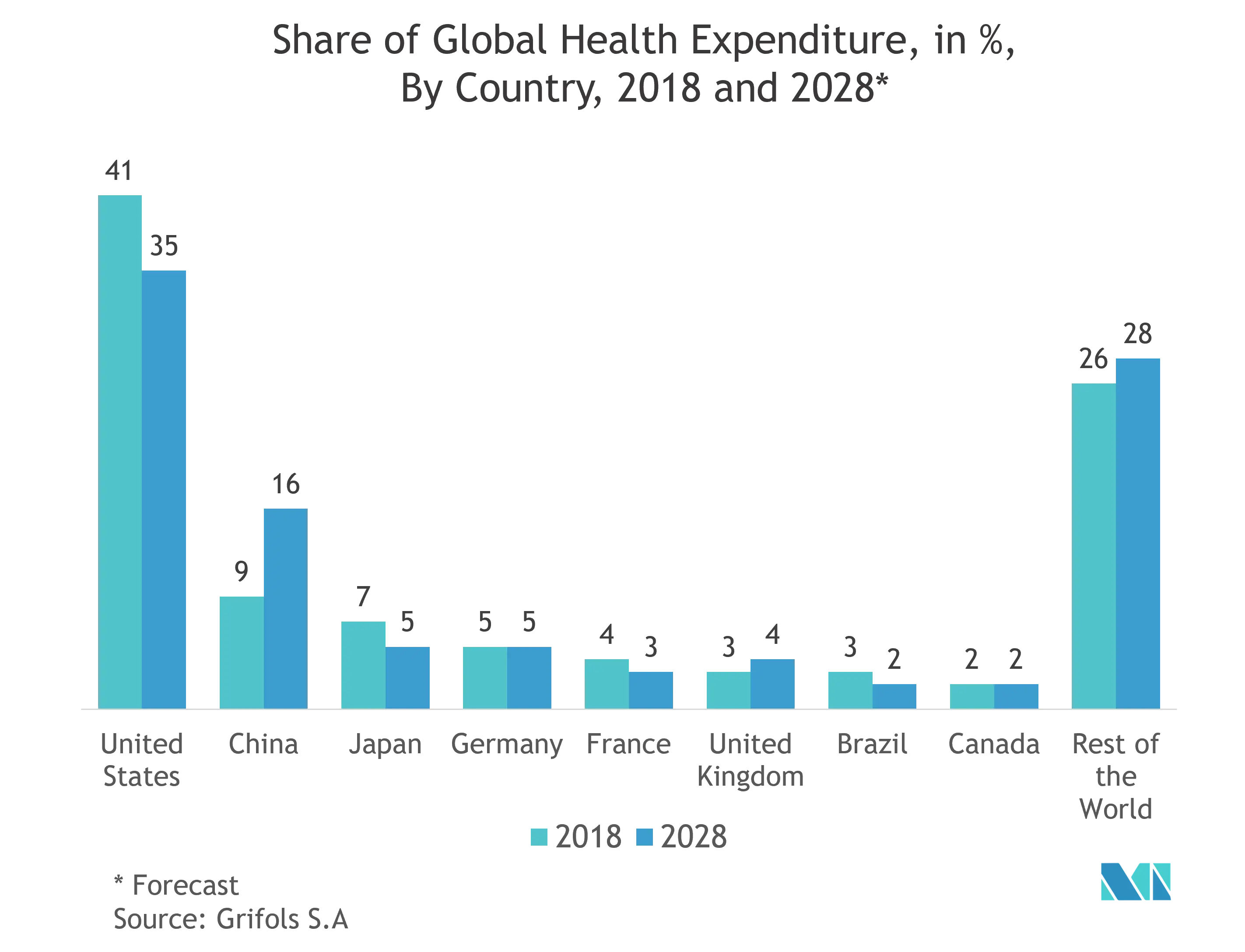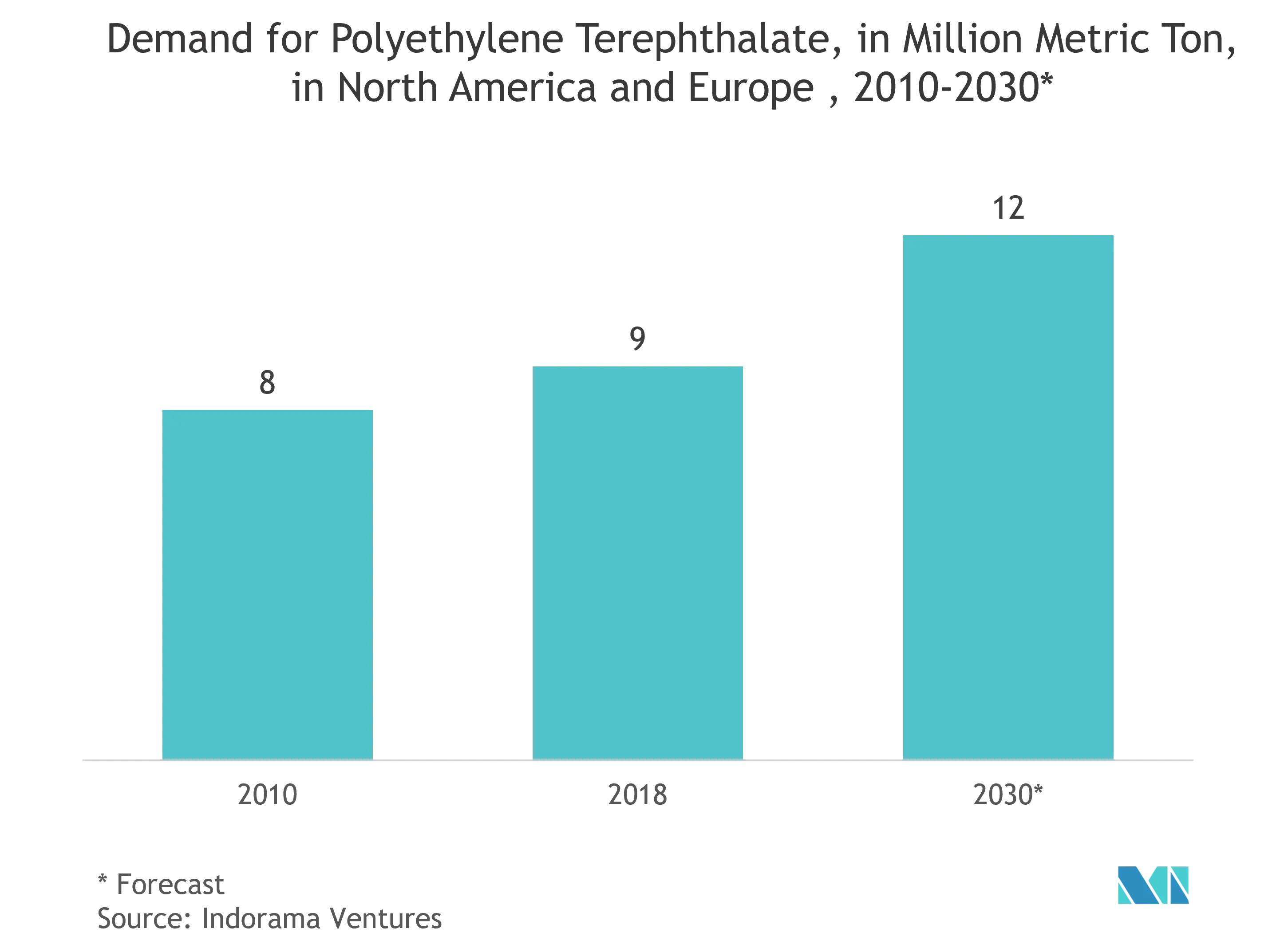Market Trends of US Plastic Packaging Industry
This section covers the major market trends shaping the US Plastic Packaging Market according to our research experts:
Pharmaceutical Industry to Drive the Demand for the Market
- The pharmaceutical market is also dominated by the United States, both in terms of consumption and development. According to STAT, prescription drug spending in the United States is predicted to reach USD 600 billion by 2023, up from an estimated USD 500 billion in 2019, which is expected to drive the growth of the country's pharmaceutical glass packaging market.
- As some of the customers face issues with opening caps and closures by a child or an old-aged person, smart and anti-counterfeiting packaging solutions became the fastest developing requirements, making the technology a perfect fit to further extend the extensive range of closures in the pharma sector.
- Moreover, concerning the environmental issue and enhancing brand appeal, various manufacturers replace outer box products with plastic made from recycled plastic. They are concentrating more on design and high appeal towards their brands. According to American Chemistry Council, 52 new plastics recycling projects have been announced in the United States have been announced between 2017-2020, with the combined value of projects being USD 4.8 Billion. The growing investments in the US advanced recycling technologies are making it probable to reuse more types of plastic than was previously possible.
- The demand for nasal spray bottles is anticipated to increase, owing to the increasing number of patients suffering from sinusitis in the region. According to Medical Devices Business Services Inc., sinusitis affects 35 million people each year in the United States, making it one of the most common health problems in the country. It is more prevalent than heart disease and asthma and has a more significant impact on the quality of life than chronic back pain or congestive heart failure.
- The usage of dropper bottles is predominantly seen with people having eye syndrome. An increasing population with eye syndrome has boosted the demand for dropper bottles in the US. The changing lifestyles of individuals, particularly the extended usage of electronic gadgets, such as computers and TV, have led to an upsurge in the prevalence of dry eye syndrome.

Polyethylene terephthalate (PET) to hold major market share
- To comply with laws and achieve a closed-loop cycle in terms of recycling, market suppliers are working on boosting the recyclability of PET packaging. PET packaging is predicted to rise in the future due to a growing emphasis on recycling these materials.
- For instance, in February 2021, Coca-Cola’s trademark brands, including Coke, Diet Coke, Coke Zero Sugar, and Coca-Cola Flavors, introduced a 13.2-oz. bottle made entirely of 100 % recycled PET (rPET) plastic in California, Florida, and a few Northeast states with other sparkling beverage brands following this summer.
- Adoption of PET can lead to up to 90% weight reduction compared to glass, allowing a more economical transportation process. Currently, plastic bottles made from PET are widely replacing heavy and fragile glass bottles, as they offer reusable packaging for mineral water and other beverages.
- PET creates a strong barrier with the external environment enabling little to no oxygen passthrough. Also, it does not react with water or food, making it suitable for consumable packaging goods. PET can be molded into a variety of shapes at a lower cost than glass, which allows brands to have a distinctive packing design to identify and promote their products and help stand out of the store shelf.
- PET is commonly used in food packaging because of its excellent barrier qualities against water vapor, gases, dilute acids, oils, and alcohols. PET is also shatter-resistant, moderately flexible, and recyclable. According to the organizers of Earth Day, 1 million plastic bottles are purchased every minute in the United States. The average American uses 167 plastic bottles of water per year; as a result of the growing demand for packaged drinking water in the region, plastic caps and enclosures, particularly PET, are in high demand.


